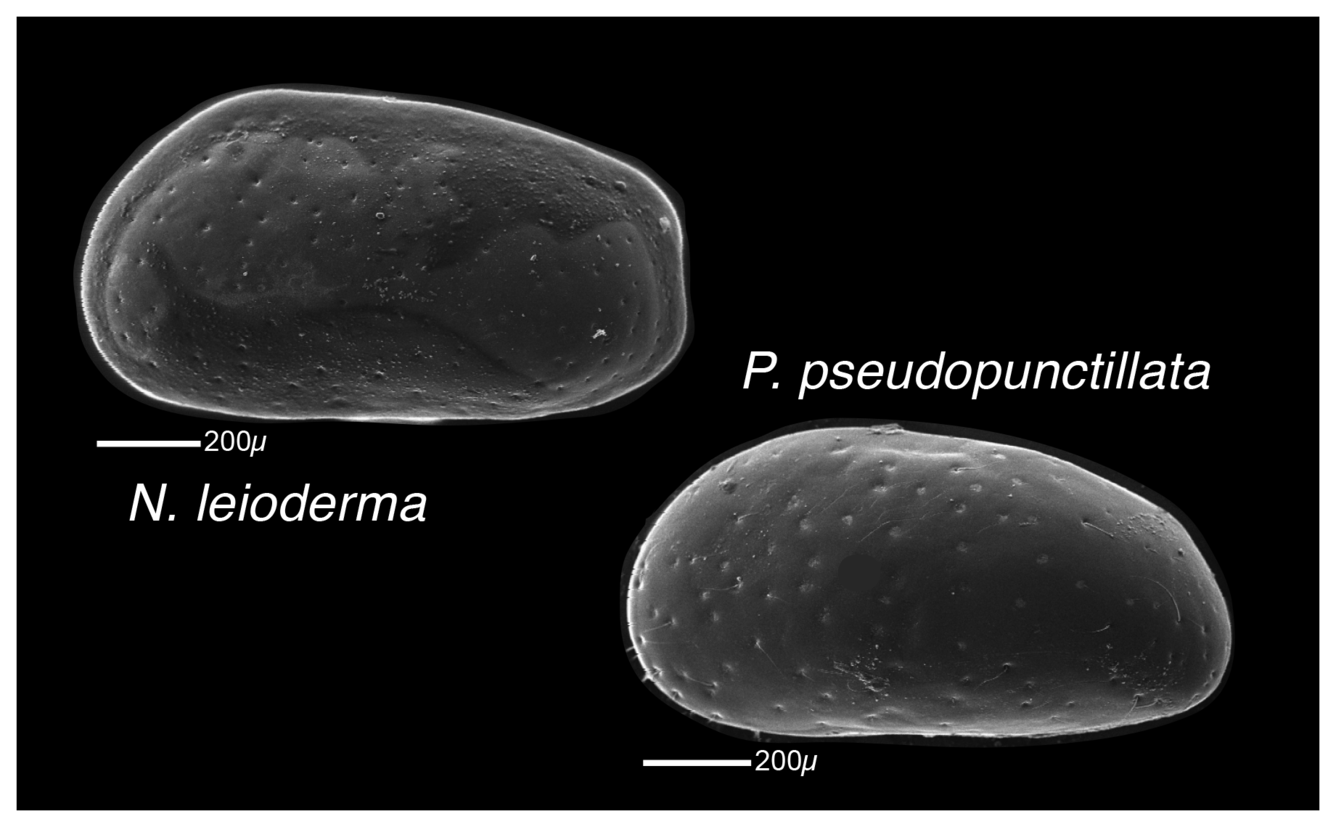USGS Researchers Develop New Oxygen Isotope Method for Paleoclimate Studies
A new paleoceanography paper was recently published by USGS Ecosystems Land Change Science Program scientists.
Two USGS researchers teamed up with scientists at the University of Maryland Center for Environmental Science (UMCES) to demonstrate a new method for reconstructing past climates. USGS scientist Laura Gemery, who is also a Ph.D. candidate with the University of Maryland, explained that the new method “uses ostracodes, which are tiny crustaceans that create calcium carbonate shells from the ocean water in which they live. The properties of seawater at the time they secrete their shell become “imprinted” in their shell walls.” The new study, published in Marine Micropaleontology (https://pubs.er.usgs.gov/publication/70220254), takes advantage of the fossil deposition of ostracodes when they die, with their shells being preserved in sediments through time. The study showed that it is practical for scientists to use the isotopic composition of ostracode shells preserved in sediment cores to infer past characteristics of the ocean water environment.
Using surface samples collected from the Bering and Chukchi Seas during 2013-2018, the participating scientists who also included long-time USGS Arctic paleoclimate expert Thomas Cronin, measured oxygen isotopes of ostracode shells from five dominant species in relation to the salinity, temperature and oxygen isotopes values of the seawater in which they were living. The study’s goal was to assess the feasibility of using these species’ shells as proxies for water mass properties in continental shelf environments.
In two of the species, the study found significant correlations between the temperature, salinity, oxygen isotope values of seawater, and the isotope chemistry of the shell. According to lead author Gemery, that suggests “this proxy indicator will be valuable for use in future paleoceanographic reconstructions over short and long timescales. One advantage might be better understanding of how sea ice coverage has changed in the past. It was also a great experience to go to the Arctic to collect the samples and to use the facilities at the USGS and the Chesapeake Biological Laboratory of UMCES to undertake the analysis.”
Get Our News
These items are in the RSS feed format (Really Simple Syndication) based on categories such as topics, locations, and more. You can install an RSS reader browser extension, software, or use a third-party service to receive immediate news updates depending on the feed that you have added. If you click the feed links below, they may look strange because they are simply XML code. An RSS reader can easily read this code and push out a notification to you when something new is posted to our site.



